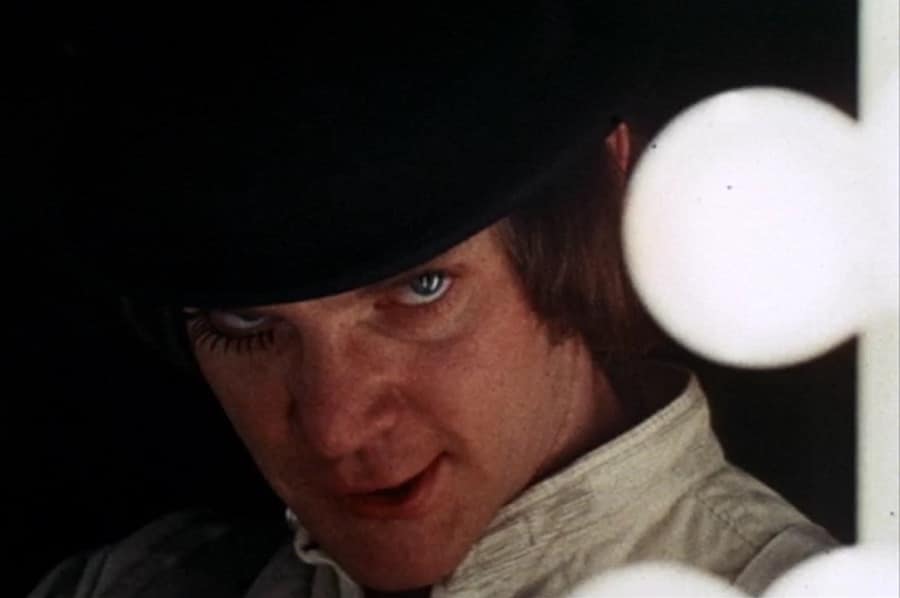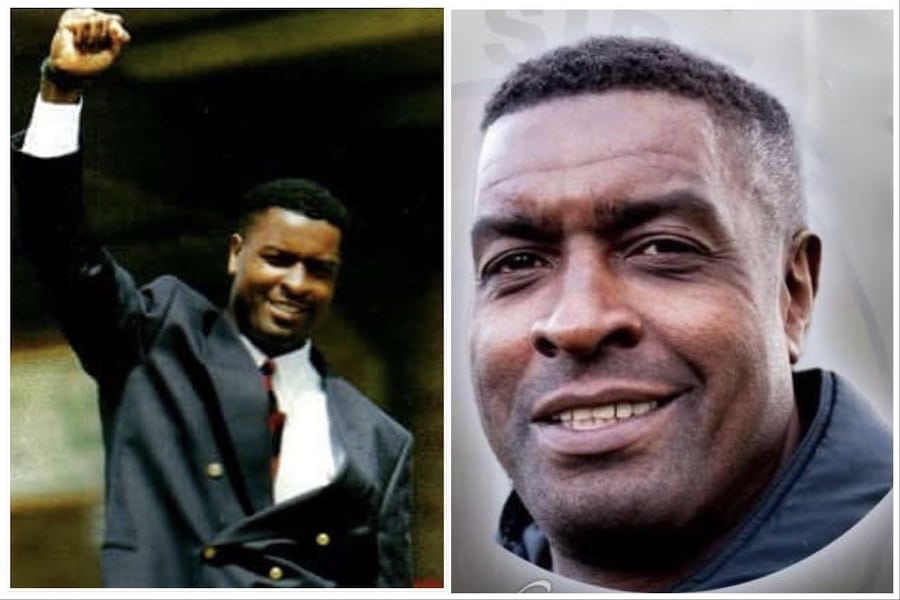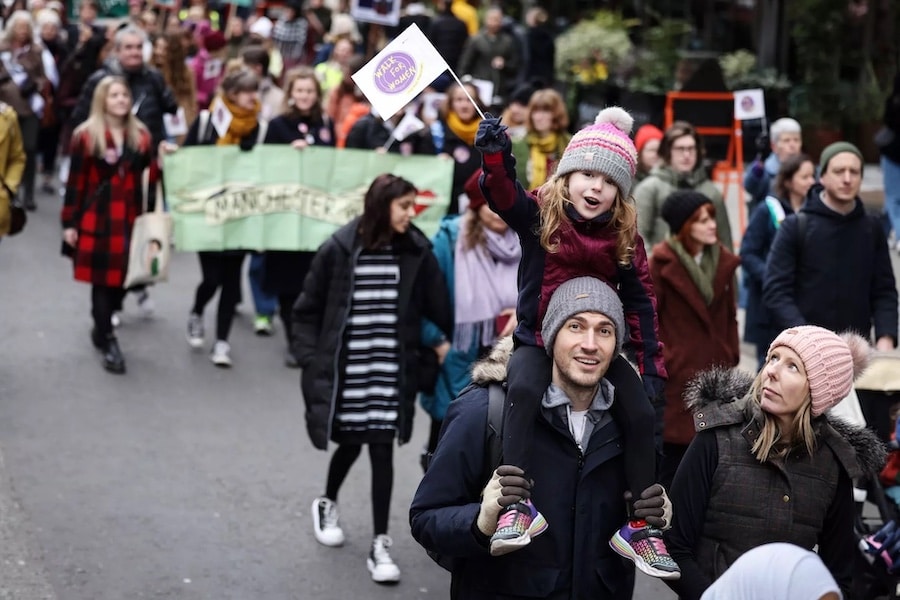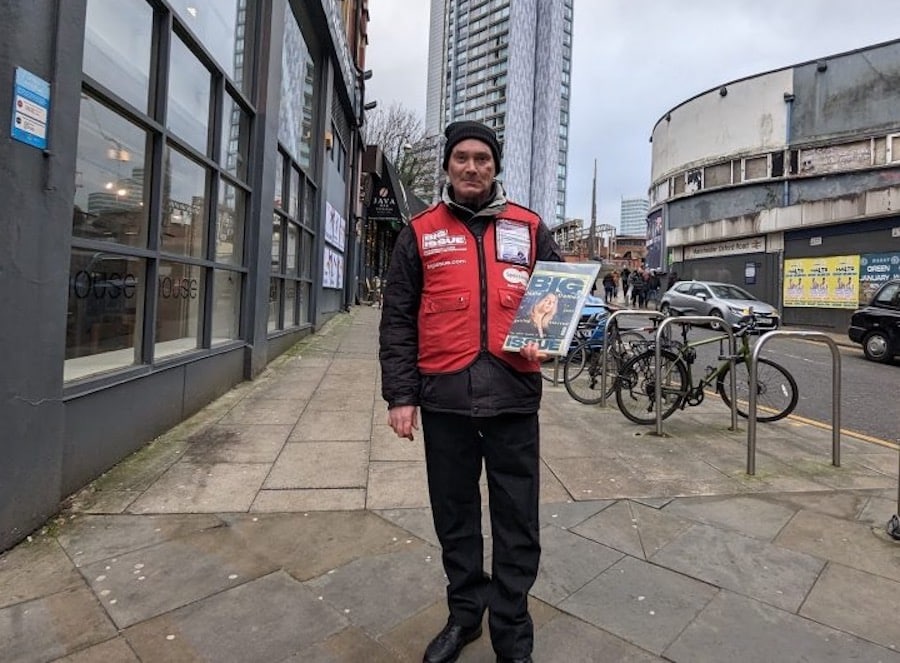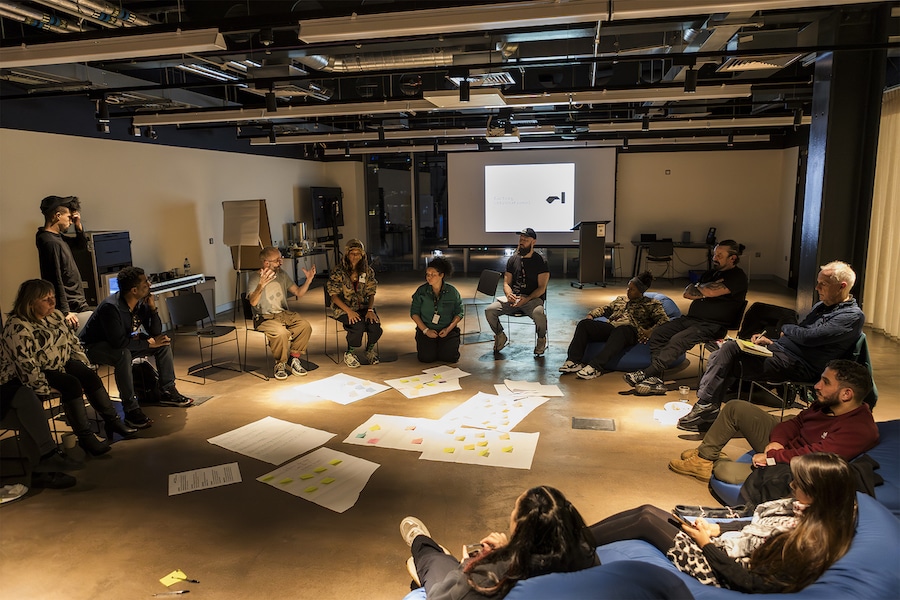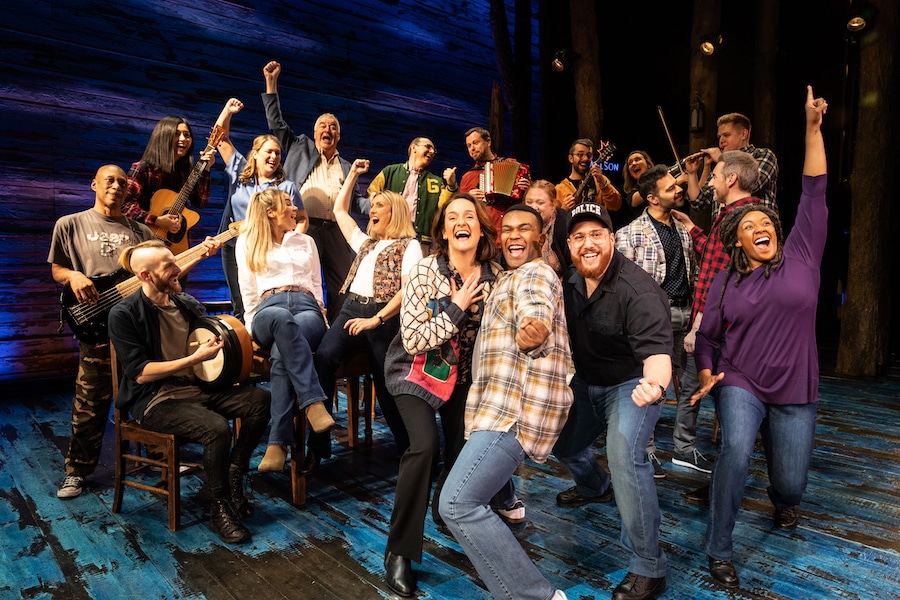My favourite Manchester works of art: Michael Ashcroft, artist
- Written by I Love MCR
- Last updated 8 years ago
- Art & Design, Culture

You’re probably familiar with the work of Michael Ashcroft. His atmospheric cityscapes of Manchester’s rain-soaked streets and, more recently, his paintings of iconic city centre pubs, are instantly recognisable.
He has received many awards including finalist in the International Artist Magazine competition and winner of the Harris Open Exhibition, but it wasn’t until he was diagnosed with a brain tumour at the age of 28 that he started to take painting seriously.
His early paintings were abstract acrylics and pastels which concentrated on the separation between light and dark before moving onto oils incorporating his early inspirations and techniques into the landscape around him.
He splits his time between studio and outdoor painting. Using a palette knife and brush, he creates a loose painterly style which is a combination of an emotional and representational response to his surroundings. Larger paintings are worked on back at the studio using oil sketches and photographs for reference.
Man’s Head (Self Portrait I) by Lucian Freud

My first choice has to be Lucian Freud’s self portrait which is in the Whitworth Gallery. I used to visit this painting every time I was near the gallery, which was quite often with hospital visits. Every time you see this painting you find something new to look at. It has a wonderful painterly quality and you can see every brush stroke the artist made. I can always tell that I am looking at a good painting as it makes me want to go home and paint.
A Spate in the Highlands by Peter Graham

My second choice is A Spate in the Highlands by Peter Graham which is in the Manchester Art Gallery. This has everything I love about landscape painting – a stormy sky, a river, trees etc. It is a well executed painting and has wonderful balance. Your eye wanders around the painting with ease starting at the focal point with the dark trees against the light clouds. It has wonderful perspective and composition.
Statue of LS Lowry by Peter Hodgkinson
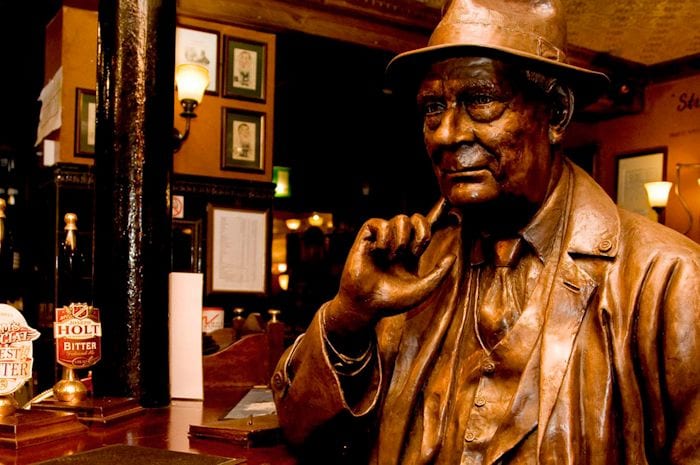
My third choice is Lowry’s statue, a sculpture of probably one of Manchester’s most famous artists. Not only do I love this sculpture, but it is housed in one of my favourite pubs – Sam’s Chophouse. I have spent many a hour in this pub having a pint and sketching. Peter [Hodgkinson] used Sefton Samuel’s original photographs for his reference and it is well worth a visit. Look out for Sefton’s photographs on the walls around the pub.
The Big Horn, Tib Street
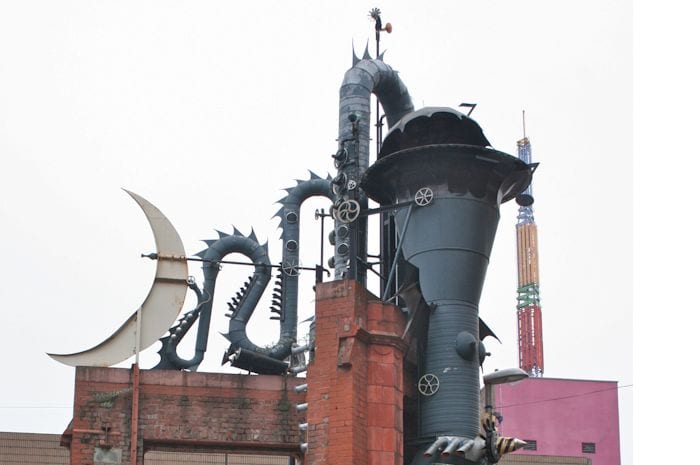
My fourth choice is the Big Horn. It’s so unusual and iconic I couldn’t leave it out. Whenever I see it I know exactly where I am but alas I hear it might be on the move, which is a real shame. I have always associated it with Affleck’s Palace and it will be sad to see them split up. I have painted it two or three times so thankfully it has been preserved in paint and I will definitely go to its new location and paint it there.
Albert Square by Adolphe Valette

My fifth choice is Valette and his painting of Albert Square. It has inspired lots of artists in Manchester, of whom I am one. He really captured the essence of the city in his time and exactly what artists of today are doing. A skilful use of greys was used to create this series of works which are a must see at the Manchester Art Gallery.
- This article was last updated 8 years ago.
- It was first published on 31 May 2017 and is subject to be updated from time to time. Please refresh or return to see the latest version.
Did we miss something? Let us know: [email protected]
Want to be the first to receive all the latest news stories, what’s on and events from the heart of Manchester? Sign up here.
Manchester is a successful city, but many people suffer. I Love Manchester helps raise awareness and funds to help improve the lives and prospects of people across Greater Manchester – and we can’t do it without your help. So please support us with what you can so we can continue to spread the love. Thank you in advance!
An email you’ll love. Subscribe to our newsletter to get the latest news stories delivered direct to your inbox.
Got a story worth sharing?
What’s the story? We are all ears when it comes to positive news and inspiring stories. You can send story ideas to [email protected]
While we can’t guarantee to publish everything, we will always consider any enquiry or idea that promotes:
- Independent new openings
- Human interest
- Not-for-profit organisations
- Community Interest Companies (CiCs) and projects
- Charities and charitable initiatives
- Affordability and offers saving people over 20%
For anything else, don’t hesitate to get in touch with us about advertorials (from £350+VAT) and advertising opportunities: [email protected]
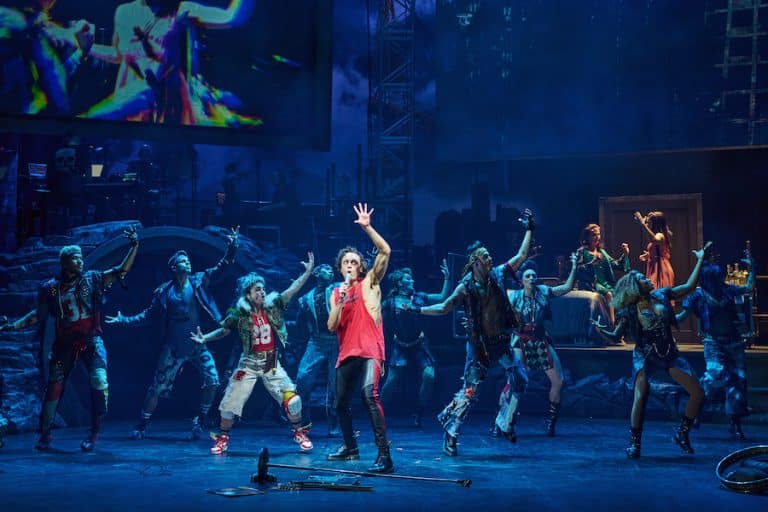
Review: Bat Out Of Hell at Palace Theatre is ‘a high-energy, adrenaline-fuelled ride’

New Oldham council chief executive vows to make the borough ‘unstoppable’



Big Issue, bigger heart: Manchester comes together for Colin







